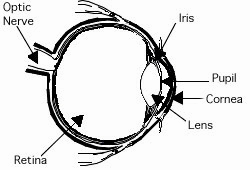Corneal Abrasion
Corneal Abrasion: Overview

How does the cornea respond to injury?
The cornea copes very well with minor injuries or abrasions. If the highly sensitive cornea is scratched, healthy cells slide over quickly and patch the injury before infection occurs and vision is affected. However, if the scratch penetrates the cornea more deeply, the healing process will take longer and, at times, will result in greater pain, blurred vision, tearing, redness, and extreme sensitivity to light. These symptoms require professional treatment. After a thorough ophthalmic exam, your doctor will probably prescribe an antibiotic to fight infection, steroid drops to relieve swelling and redness, and may even give you a patch to wear over your eye to reduce strain and light sensitivity
Deeper scratches can also cause corneal scarring, resulting in a haze on the cornea that can greatly impair vision. In this case, corneal surgery or even a corneal transplant may be needed.
Safety First
Prevention is key. Always wear protective goggles in any situation where flying debris can end up in your eye. You should be particularly sensitive to protection if you have already experienced a corneal abrasion.
Printable Version (PDF)
This educational material is provided by Dialog Medical.
© Copyright 2005 Dialog Medical
All Rights Reserved
The Eye Center
Call Toll Free 1.888.844.2020

